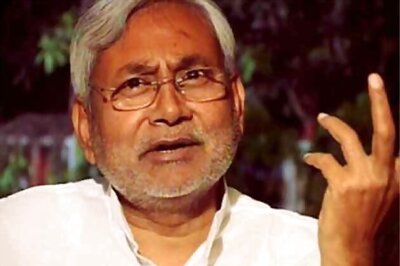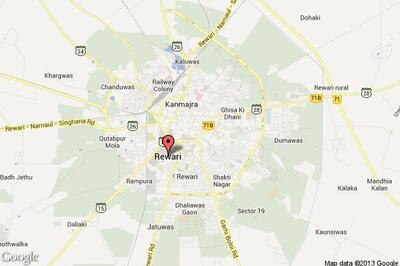
views
At a time when parts of England are besieged with burning social unrest, the United States of America is downgraded in the midst of her worst internal political squabble and the fear of contagion of bad debts in Europe is spreading globally, India is pondering whether it can meet her targeted GDP growth of 9 per cent with a decent rate of inflation. Though apparently it seems that except for the occasional volatility of the Sensex, much of India has been able to shield herself from the social, economic and political heat of the recession-stung West, a closer look reveals the structural weaknesses ingrained in her whole system.
True, the economic liberalisation in the 1990s unleashed raw energy latent in selected areas and ushered the country into a new era but signs of bottlenecks have already surfaced and if not addressed properly, they could choke the engine of growth. Before we diagnose the sources that might put brakes on the speed of economic growth, it is imperative to take stock of what has come to pass so far.
The economy grew at an average of close to 8 per cent all throughout the last decade (except for the year of global meltdown ie 2008-09). The industrial sectors though started somewhat late but caught up with the rest and grew at about the same rate.
The savings rate has risen to 32 per cent over time and has narrowed its gap with the planned investment which is close to 35 per cent. Even with arrays of such good news, dark clouds hover over the horizon because a decade of growth has failed to bring the level of poverty down to a respectable level.
Even the most reliable estimate puts the number of Indians below poverty level close to 645 million. The figure for China is about 100 million. While India's poverty rate is likely to fall to about 30 per cent in 2015, that of China is projected to fall below 5 per cent by then. The mean years of schooling in India were estimated to be 4.4 years, compared to 7.5 years of China. China's adult literacy rate is 94 per cent while the same figure for India stands at 75 per cent.
Of course, overall comparison with China is neither fair nor appropriate because it amounts to comparing apples to oranges. China started the process of industrialization a decade and half earlier than India with an exclusive emphasis on export-led growth supported by a weak currency regime via artificial intervention by the government. All these factors, together with China's monolithic political structure, made the process of growth experiences very different in these two countries.
Thus, even if one sets aside these factors which may account for different level of performances, the sharpest division with China (or for that matter with any other country) lies in the pattern of industrialization that India has experienced in recent times.
In the classical pattern of economic development, low skilled, labour-intensive manufacturing sector grows in the first phase, typically followed by high skilled and human capital-intensive services in the next. Hence, the relatively poorer people without skills and education also get a share of the economic prosperity even in the initial phase of industrialization.
However, insignificant this share is to begin with, the empirical fact remains that newly employed people from all sections of the society tend to spend resources on skill and education of their offspring. Thus, a generation grows up, not too distant in the future, which is ready for the second phase of industrialization that requires skill and human capital. This natural process of "trickle down to the bottom" eases the supply constraint on skills, evens out the rough edges of inequality and makes the production structure of an economy broad-based and helps the poorer sections of today to become upwardly mobile within a few generations. Though the path may not be monotonic but such is the experience of not only the industrial West but also of Japan and very recently of China as well.
In India, paradoxically, the process of industrialization in the last decade and half had been in the reverse order where the skill-intensive services in new technology, communication and finance (which together grew almost 12 per cent over the last 10 years) took the lead and, in turn, pulled up the manufacturing sectors via the mechanism of demand for such products. This had happened mainly due to a lopsided education policy where higher education (science, engineering and technical) received primacy over primary schooling.
A tiny middle class, which had acquired education and skill prior to the nineties, received the fruits of liberalization but poorer people had been left behind due to both lack of public provision of primary education and a trailing rate of industrial growth in low skill intensive manufacturing sectors like toys, textiles etc. This has made fighting poverty a Herculean task in India. Initial industrialization biased in favour of high-tech sectors failed to absorb poorer section of the society lacking in skill and education. They were left in the lurch.
Poverty inflicts multi-dimensional curse both on individuals affected as well as the society but it has a huge adverse impact on sustaining the process of all encompassing economic growth. An ill-fed person is left out from the labour market because potential employers find a poverty-stricken person unproductive and unemployable due to poor state of health. The person thus remains unemployed or under-employed and can ill afford education of child and is also shunted out from the credit market due to lack of collaterals and is denied entry in the market for health or disability insurance.
The permanent exclusion from all sorts of markets which is the prime engine of growth deals a blow to overall growth because ultimately the economy hits the ceiling due to scarcity of skill which is grossly inadequate in supply due to widespread inequality and poverty. Precisely here comes the poverty of thoughts of our policy makers.
The task of the Government, though momentous in practice, is simple on principle: It must redistribute a part of the resources to lift poorer people belonging to the current generation as much as possible so that they can participate at least in the unskilled labour market of today. This can help their future generations to enter the skilled labour market some decades later.
The Government has allocated a huge sum of money to be spent on the poor but its effect will be limited due to lack of a coherent strategy towards alleviation of poverty.
The NREGA, for example, had provided employment to 4.34 crores of people in 2009-10 and created 182.88 crore man days with an emphasis towards scheduled castes, tribes as well as women. True, it has had some positive effects in the form of raising the market wage rate in the rural areas even during the lean season but evidence is at best scattered. In fact, just allocation of funds without proper methods of implementation displays a lack of imagination on part of both politicians and bureaucrats. It does not help the fundamental task of eradication of poverty.
Development economics in the last two decades have made tremendous strides in addressing the issues of micro implementation of policy via the progress of incentives theory and innovative use of randomized trials. The former aims to minimize costs of leakages in the process of delegation to an authority carrying out a task and the latter emphasizes on innovative randomized trial to understand the core issues behind poverty specific to attributes present in a location.
An example to solve the leakage is introduction of food coupon system espoused by Professor Kaushik Basu. This would directly cut down the intermediary (ration shops) and empower the beneficiaries directly and would minimize the problems of distribution of food grains. If such coupons are tagged with UID, it will be more efficient and effective.
On the other hand, rich examples of randomized trials are present in the works of Abhijit Banerjee, Esther Dufflo, Dean Carlan among others. An illuminating example is its findings on the impact of de-worming of children on education.
An experiment found out that that de-worming increased school attendance by an additional year for $3.50 while the next best programme (offering school uniform) would achieve the same results for a cost of $100.
Another study showed that use of camera with date and stamps led to marked improvements in attendance of school teachers and academic performance of students. Though randomized trials themselves have limitations because of the lack of universalities of results and other limitations but the point still remains that combating poverty is a serious task and involves judicious application of incentives in delegation, use of technology and randomized trials to gain further insights on the root causes of poverty which will not vanish just by allocation of a specified sum for the purpose.
Despite launch of ambitious programmes to eradicate poverty, 51 per cent of Indians live under abject poverty. The skewed pattern of industrialization and lack of a coherent strategy to combat poverty in imaginative ways will make half of the Indians shine in the future while the other half will watch the rest shining while they languish in destitution and misery. There is every indication to believe that the country will fall into a perpetual trap of being restricted to a middle-income economy unless the state wakes up sooner.
(Sanjay Banerji is Professor of Finance at Nottingham University and has been an academic visitor to Department of Economic Affairs (DEA) of the Finance Ministry, India)


















Comments
0 comment